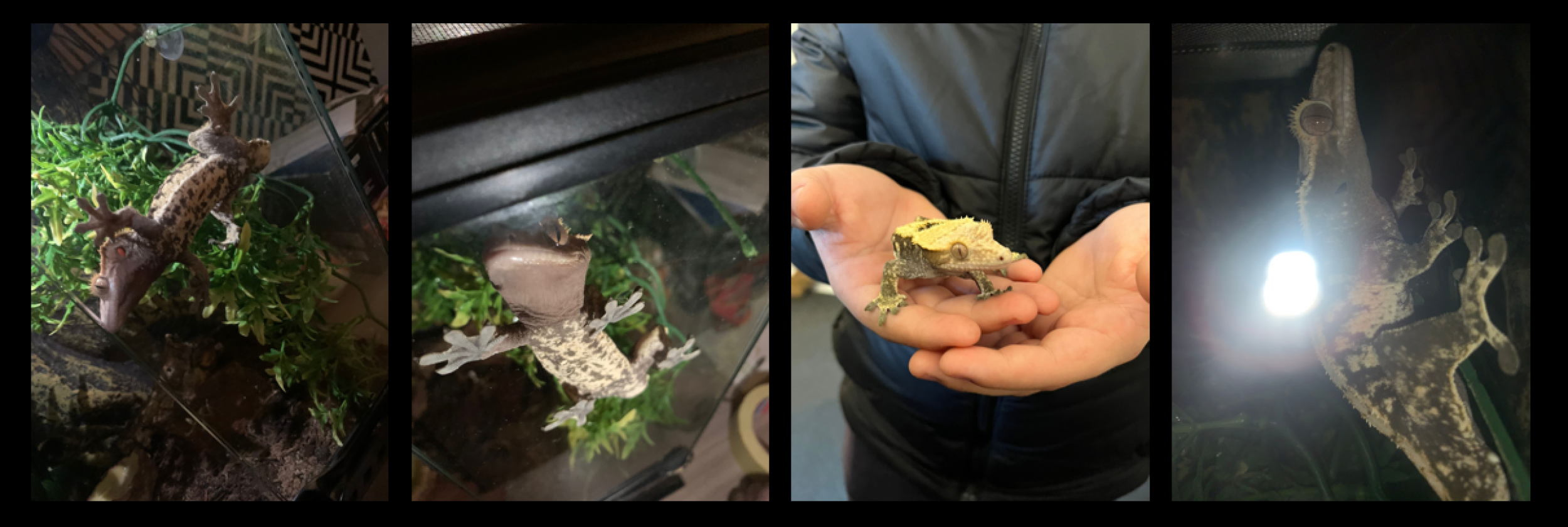Crested geckos are fascinating and unique creatures that make great pets. Setting up a terrarium for your crested gecko can be a fun and rewarding experience, but it’s important to ensure that you provide the right environment to keep your pet healthy and happy. In this guide, we’ll walk you through the process of setting up a crested gecko terrarium step-by-step.
Choosing the Right Terrarium
The first step in setting up a crested gecko terrarium is choosing the right terrarium. Crested geckos are arboreal, meaning they spend most of their time in trees, so a tall terrarium is essential. A minimum terrarium size of 18 x 18 x 24 inches is recommended for a single crested gecko, but larger terrariums are always better.
There are a variety of different types of terrariums available, including glass tanks, plastic tubs, and mesh cages. Each type of terrarium has its own advantages and disadvantages, so it’s important to consider your needs and your pet’s needs when making your selection.
Creating a Habitat
Once you have your terrarium, it’s time to create a habitat that is conducive to your crested gecko’s health and well-being. This involves providing the right type of substrate, decor, and lighting.
Substrate: Crested geckos need a substrate that retains moisture well, as they are native to humid rainforest environments. Coconut coir or sphagnum moss are popular options for substrate, as they are able to hold moisture well.
Decor: Provide a variety of branches, vines, and plants to create a natural-looking environment. Live plants, such as pothos, are a great option as they provide both visual appeal and a source of humidity.
Lighting: Crested geckos are nocturnal creatures and do not require UVB lighting. However, they do need a source of heat to regulate their body temperature. A low-wattage heat bulb or ceramic heat emitter is recommended.
Providing for Basic Needs
In addition to the habitat itself, there are a few basic needs that must be met in order to keep your crested gecko healthy and happy.
Water: Provide a shallow dish of fresh water at all times. Replace the water daily and clean the dish regularly to prevent the buildup of bacteria.
Food: Crested geckos are omnivores and require a diet that includes both insects and fruit. A commercially available crested gecko diet is a convenient and nutritionally balanced option, but live insects such as crickets, roaches, and mealworms can also be offered.
Temperature and Humidity: The ideal temperature range for a crested gecko is 72-78°F during the day and 65-72°F at night. Humidity should be kept between 50-70%. Use a digital thermometer and hygrometer to monitor the temperature and humidity levels within the terrarium.
Maintenance
Regular maintenance of your crested gecko terrarium is essential to keep your pet healthy and happy. Here are a few tips to keep in mind:
- Clean the water dish daily and replace the water.
- Remove any uneaten food from the terrarium to prevent bacterial growth.
- Mist the terrarium once or twice a day to maintain humidity levels.
- Clean the substrate regularly to prevent the buildup of bacteria.
Setting up a Crested Gecko’s Terrarium FAQs
What type of substrate should I use in my crested gecko terrarium?
Crested geckos need a substrate that retains moisture well, such as coconut coir or sphagnum moss.
Does my crested gecko need a heat lamp in its terrarium?
While crested geckos do not require a heat lamp, they do need a source of heat to regulate their body temperature. A low-wattage heat bulb or ceramic heat emitter is recommended.
Can I use artificial plants in my crested gecko’s terrarium?
Yes, artificial plants can be used, but live plants are preferred as they provide both visual appeal and a source of humidity.
How often should I clean my crested gecko’s terrarium?
The water dish should be cleaned daily and the substrate should be cleaned regularly to prevent the buildup of bacteria. Spot cleaning should be done as needed to remove uneaten food and waste. The entire terrarium should be deep cleaned once a month.
Can I use tap water in my crested gecko’s water dish?
Tap water can be used, but it should be treated with a water conditioner to remove any chlorine or other chemicals that may be harmful to your pet. It’s best to use distilled or purified water if possible.

